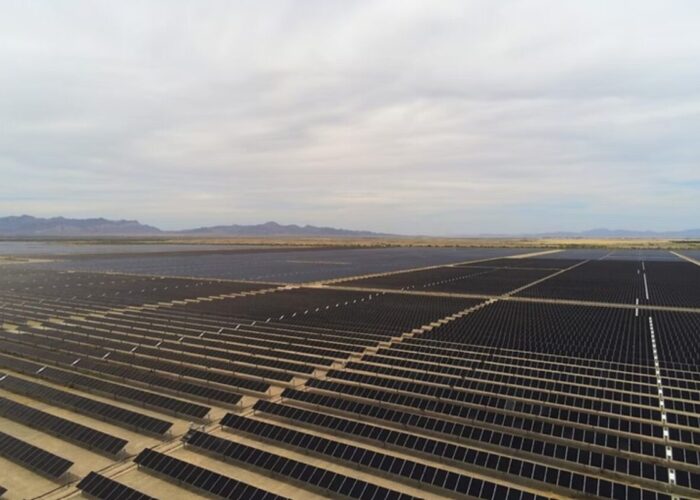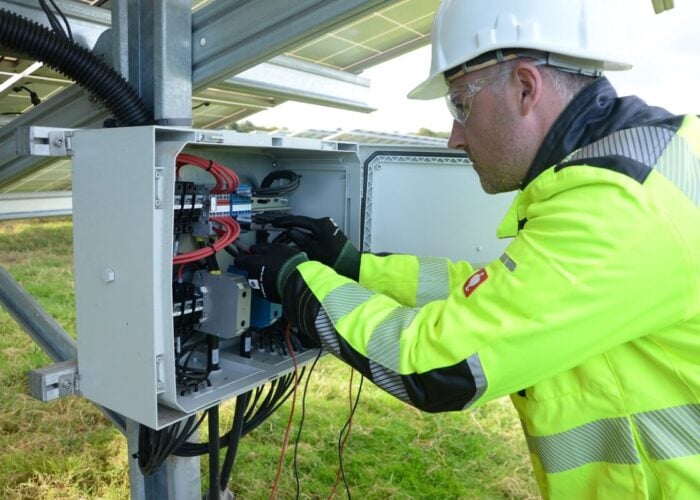It’s hard to think of any segment in the real economy where future prospects are as bright as they seem to be for the PV industry. Hardly known for sentiment-driven forecasts, the International Energy Agency has regularly increased the projected long-term share for PV electricity generation, in step with industry advancements on the PV learning curve. Global installations of this scalable technology are boosted by improving economics (such as levelised cost of electricity) and favourable regulatory environments in established and emerging PV markets alike. Promising prospects for growing off-take markets has resulted in a new round of capital investments for module production capacity by incumbents as well as new entrants since the beginning of 2014. Figure 1 depicts prominent expansion announcements outside of the more established locations in Asia, USA and Europe.
Try Premium for just $1
- Full premium access for the first month at only $1
- Converts to an annual rate after 30 days unless cancelled
- Cancel anytime during the trial period
Premium Benefits
- Expert industry analysis and interviews
- Digital access to PV Tech Power journal
- Exclusive event discounts
Or get the full Premium subscription right away
Or continue reading this article for free
An industry outsider might wonder whether these additions are sustainable and likely to be absorbed by end-market requirements or just mark the beginning of yet another manic-depressive PV investment cycle. The last cycle ended abruptly in 2011 with the known consequences on PV company failure rates. On a global, macro-based view, production capacity additions relative to existing capacities and capacity growth rates are not close to the exorbitant levels from the 2008-12 boom phase, where annual cell capacity grew at a compound rate of almost 50% per year (Figure 2). Further, the appetite to fund unproven and revolutionary technology ventures on an industrial scale seems to be subdued, when compared to the pre-market clearing era. Hence, the overall investment climate for new capacities seems to be much more moderate and in balance with end-market needs.
So, no hype no worry?
While market risks from overcapacities appear to be averted for the time being, a more imminent problem resides in the capital budgeting phase of new entrant production projects in emerging PV markets. The spectrum of available data points covers a fairly broad range from “about normal” to “outrageously high”. While new entrants typically have higher capital requirements in order to compensate deficits on the learning curve, the premium should be diligently managed by all stakeholders in order to avoid a rude awakening during the operational phase. This is particularly true in shielded, local content markets, as here the end consumer will ultimately foot the bill.
Figure 3 is derived from 17 data points and shows a comparison of average investment ratios for expansion projects with varying levels of vertical integration that have been announced since the beginning of 2014. It distinguishes between two categories – “new entrants” and “incumbents”. This empirical dataset indicates that the new entrant premiums have been 150% for integrated ingot-to-module operations, about 70% for integrated cell-to-module plants and roughly 210% for the module-only assembly. Hence, these hefty market-entry spreads are of significant importance and need to be analysed in terms of their commercial implications already during early planning stages in order to avoid unpleasant surprises in later construction and operation phases.
Local content requirements give prospective producers a chance to develop a prospering industry that is partially shielded against tough international competition for a certain amount of time. This policy is called infant industry protection and has been utilised in various forms in different sectors and geographies (Figure 1). In this context three aspects need to be investigated in due care in order to maximise the effectiveness of such policies: first, from the perspective of the private stakeholder, the resilience of the business model against later relaxations of regulations; second, from the perspective of the public stakeholder, the balanced design of the support mechanism in order to disincentivise the private sector from wasting economic resources in “outrageously budgeted pet projects”; and third, which will be the focus of the remaining blog, from the perspective of the lender, who is concerned with the sufficiency of debt service coverage ratios under different operating scenarios over the project life.
A typical lender’s review for industrial projects contains a commercial, technical, financial and legal audit, regardless of whether debt capital is provided via unsecured or secured loans or through project financing agreements. The commercial and technical review requires a holistic industry understanding, especially if new entrant projects are financed in emerging PV markets on a limited recourse basis. As new entrants or project sponsors typically revert to specialised turnkey equipment, technology and EPC providers in order to mitigate construction and early stage operation risks, these contractors are likely information sources for debt capital providers alike. In consequence, a sub-optimal selection of these contractors by the project owner might lead to an over-optimistic assessment in lender’s due diligence (LDD).
The core problem is the divergence in the time horizons by different stakeholders; the contractors typically have a short- to mid-term view while debt and equity providers, in theory, should have a longer-term horizon. In practice, this conflict of interest can be circumvented and managed through independent external industry experts that act as lender or project owner representatives. Figure 4 gives an overview on main elements of the LDD process for industrial projects.
Regionally diversified and growing PV markets have once again led to increased investment activity and corresponding expansions of production facilities worldwide. This broad-based expansion is driven by both incumbents and new entrants. The latter group needs to pay market entry premiums which can be considered substantial and in some instances even excessive (Figure 3). This, in turn, requires that business cases are reviewed with extraordinary scrutiny by the various stakeholders in order to avoid a rude awakening during the operation phase.
In this regard, a special focus needs to be on the LDD process, as debt capital providers stand to lose most in highly leveraged project financing agreements. Here, a disentanglement of interests is needed in order to harmonise diverging time horizons between different stakeholders in the project. The introduction of third-party due-diligence support during early planning stages can bridge this gap and support in the alignment of interests, and thereby mitigate risks in planning, construction and operation phases.






